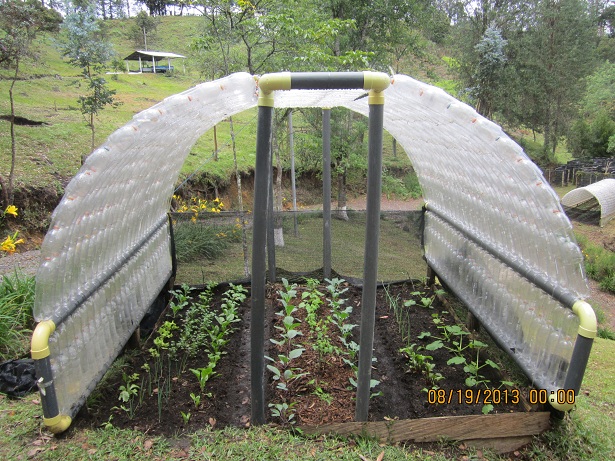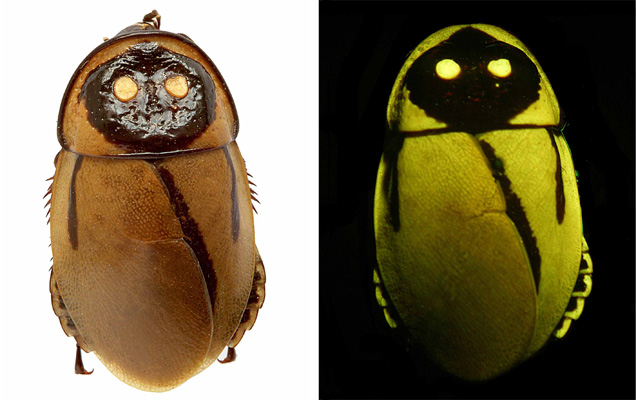Search Results for Tag: global ideas
Do you really need all of that?
All we need is less?! from youthinkgreen on Vimeo.
Flo is more than a funny guy in a video. He’s a musician with a message: Think about your daily routines, your daily needs, your energy consumption or the way you use cars and plastic bags. Together with the youth network “YOUTHinkgreen” he wants to proof that little changes have an impact in our lives. In an experiment Flo is going to leave his personal comfort zone for a few weeks. From November 25th he will live without unnecessary packaging for 7 days, he will avoid motorized transport for another week and finally he will try to live without electricity. Flo will keep us updated on his feelings, successes and dissappointments, by texts, pictures and some video posts. If you want, you are free to join him.
Plastic bottles to greenhouses
 A few days ago we received a very inspiring idea from Colombia. The e-mail came from the Centre for Science and Environmental Awareness and it helps to deal with growing mountains of empty plastic bottles.
A few days ago we received a very inspiring idea from Colombia. The e-mail came from the Centre for Science and Environmental Awareness and it helps to deal with growing mountains of empty plastic bottles.
We learned from the institute’s website that in Colombia an incredibly large amount of 15,000,000 plastic bottles is dumped every day. These bottles are not only thrown into trash bins, they are mainly just thrown away somewhere and this way become a very serious environmental problem.
The Centre for Science and Environmental Awareness tries to tackle the problem. As you can see in the picture, greenhouses are built to grow daily goods. The plastic-bottle-roofs have a size of about 3×3 meters. With only 4 hours work a week the roofs help to feed a family for a whole year, writes Carlos Alberto Yepes Vera, director of the center.
He also calls out to donate bottles or similar garbage to build more of these houses. The project’s goal, he says is also to build an awareness among the population to avoid the use of plastic bottles.
We are extremely grateful to hear from ideas like this one, so send us more of it!
The President calls to act – Obama’s climate speech
US-President Barack Obama gave a speech on climate change yesterday. His words could lead to a milestone-process for US climate politics. He made clear that the United States have to play a leading role in the world’s ambitions to tackle global warming.
The plans the president rolled out are foreseeable wide-ranging, including a limit on carbon pollution for the first time in US history.
Emissions need to fall by 17 percent until 2020, the President said. This will “put an end to the limitless dumping of carbon pollution.”
The emissons already dropped last in 2012 on the lowest amount in 20 years. But not for climate security reasons. The moderate economic developement of the United States and the growing use of natural gas (which has an lower amount of carbon dioxide) rather were responsible for the decreasing numbers.
The exact plans
According to the speech he held in Washington, the United States would boost the production of renewable energy, increase efficiency standards and prepare communities to deal with higher temperatures.
So what exactly the president wants to happen?
The energy that is harnessed from sun and wind should be doubled, according to Obama. That makes a power supply for more than six million househoulds in the US. The president also spoke about the highly debated Keystone Pipeline-project, that is planed to transport tar sand-oil from Canada to refineries at the Gulf of Mexico. This pipeline will only be build if it „does not significantly exacerbate the problem of carbon pollution.“
Another point was the building of a new nuclear power plant, the first one in 30 years. In opposition to Germany for example US still count on nuclear power as a green and save source of energy.
Impacts for the private sector
Obamas plans also reach for the private sector as well. Besides a fuel consumption that is now enlarged from cars to trucks the President wants to fight the waste of energy in private homes, public buildings or companies by supporting building insulation or energy saving light sources.
So, the speech offers a lot of plans. But what can be done? Nothing can be established immediatly, there’s always a long process about a few years. And Obamas presidency lasts for three more years. But at least the plans would be put in place through an executive order, bypassing the Congress, which has stalemated over climate legislation in recent years.
During his presentation the audience could literally see what all this is about: The oppressive heat of June often forced beads of sweat on the presidents forehead.
When a glowing cockroach meets a blue-balled monkey
Each year, on the birthday of Carolus Linneaus (also known as Carl von Linné), who was a great Swedish botanist of the 18th century, the International Instiute for Species Exploration at the Arizona State University releases a top 10 list of last year’s new discovered species.
2012 must have been a great year for taxonomists (these guys give the new species their names), because the list offers some very special creatures such as a glow-in-the-dark-cockroach, a comb-shaped sponge or the world’s yet smallest frog.
The ten species have been choosen from a list of 140 nominees that have been take from a list of 18.000 named species in 2012. So are they more important then the others? Of course they are not. But they probably are more able to raise public awareness on the biodiversity crisis then others.
See yourself if it works. The scishow on youtube has done a very fast and funny video about that list which is definitly worth a look.
At least the list is a very welcome change in the usual news reports on the eco-system. Not everything here has to be doomy all the time. But, of course, the habitats of the new discovered species are not automaticly secured. Most of them are already threatend and just a few steps away from extinction.
Read those lists where you find them. They are important.
Jane Goodall: 300 days on the road for the cause
Meeting Jane Goodall, British primatologist and avid environmental activist, is an honour. Global Ideas took the opportunity to talk with the world’s foremost expert on chimpanzees during a film screening in Brussels. The documentary Love MEATender focuses on earth’s growing hunger for more meat and the price we already have to pay for the excessive consumption.
A lot of people are already aware of the situation we are in, Goodall says. But that does not automaticly change something:
GI Jane Goodall What has to be done from DW_Global Ideas on Vimeo.
One of today’s main problems is that earth’s population is growing fast and with it the number of people who want to consume meat, Goodall adds. As the middle classes in the developing world are rising up, they want to have the same standards of living as the industrialized countries have. “Which is of course understandable.” But the planet is not growing, so it won’t be able to support this lifestyle much longer.
GI Jane Goodall more meat more problem from DW_Global Ideas on Vimeo.
For Jan Goodall the newest generations are the key to a solution. Her organization, the Jane Goodall Institute, runs an initiative called “Roots and Shoots program,” with the goal to “provide young people with the knowledge, tools and inspiration to improve the environment and the quality of life for people and animals,” as the program’s website says. “We need to train a new generation to be better stewards than we have been,” she adds. Otherwise there would be absolutly no point:
GI Jane Goodall important young people from DW_Global Ideas on Vimeo.









Feedback